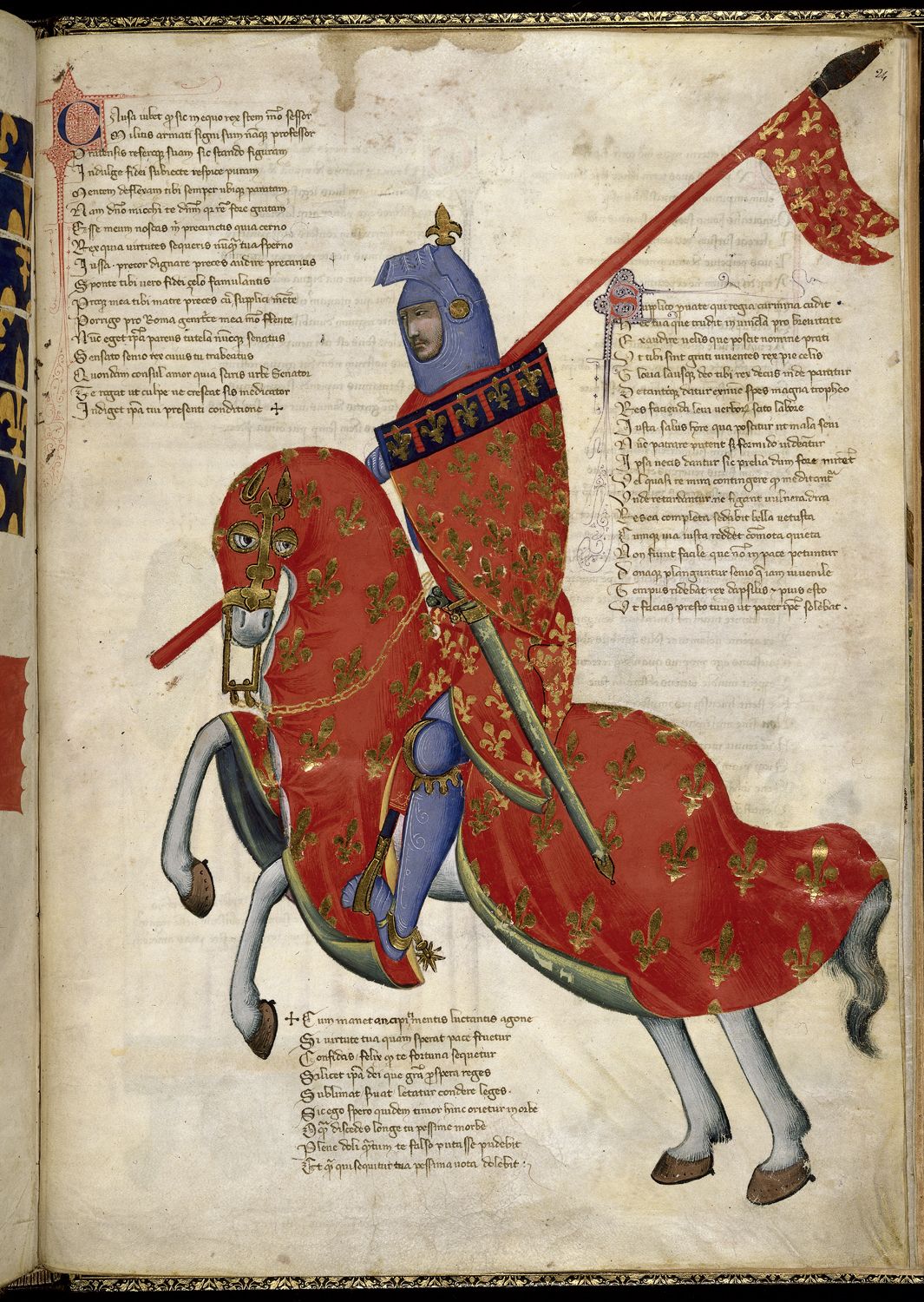Have you ever wondered about the role of horseback riding in medieval times? It’s a fascinating topic that takes us back to a time of knights and castles. In this article, we’ll explore the many ways horseback riding was an integral part of medieval society. From warfare to transportation, horses played a crucial role in daily life. So, saddle up and get ready to learn more about the fascinating history of horseback riding in medieval times.
In medieval times, horseback riding served various purposes. One of the most prominent roles was in warfare. Knights relied heavily on their trusty steeds to charge into battle, wielding their weapons and wearing heavy armor. The speed and mobility provided by horses gave knights a distinct advantage on the battlefield. Additionally, horses were used to transport goods, people, and information across long distances. In a time before cars and planes, horses were the fastest and most reliable mode of transportation. From delivering messages to carrying royalty, horses were essential in connecting different parts of the realm. These are just a couple of the ways in which horseback riding played a vital role in medieval society. If you’re curious to learn more about this fascinating topic, keep reading our article on horseback riding in medieval times.
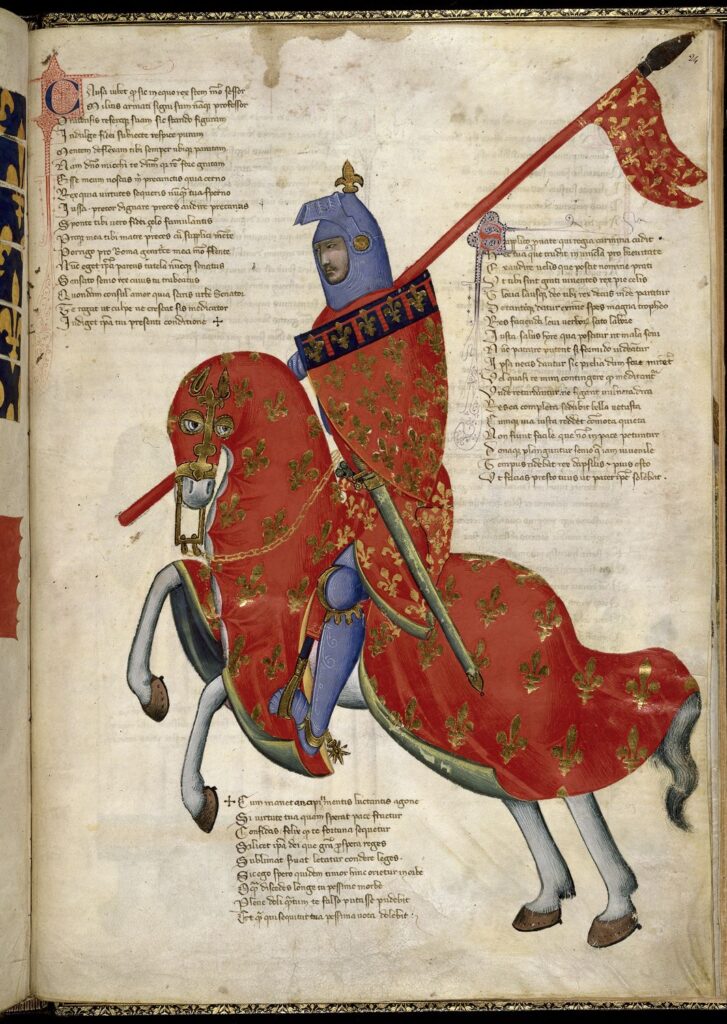
The Origins of Horseback Riding
Horseback riding has a rich history that dates back to ancient times, specifically during the medieval era. The practice of riding horses has evolved and played various roles in society, including transportation, warfare, and even religious ceremonies. In this article, we will explore the different aspects of horseback riding in medieval times and its significance in shaping the society of that era.
The Domestication of Horses
The domestication of horses was a monumental achievement in human history, and it greatly influenced the development and progress of civilizations. The exact origin of horse domestication is still a topic of debate among historians and scientists, but it is widely believed to have occurred around 4000 BCE in the Eurasian steppes.
Early humans recognized the strength, speed, and versatility of horses, leading them to capture and tame these magnificent creatures. Through selective breeding and careful training, humans were able to transform wild horses into useful companions. This marked the beginning of a longstanding partnership between humans and horses, which would later become indispensable in medieval society.
Early Forms of Horseback Riding
In the early stages of horse domestication, riding horses was not as prevalent as it became in later centuries. Initially, horses were mainly used for their strength in pulling carts and plows, as well as for their role in warfare. However, as humans started to develop more advanced saddle technologies, riding horses became more practical and accessible.
The invention of the stirrup in the 4th century CE revolutionized horseback riding. The stirrup provided stability and balance to riders, allowing them to maneuver more effectively during battles and engage in long-distance journeys. This newfound control over riding horses opened up endless possibilities and paved the way for the widespread use of horses in various aspects of medieval life.
Horseback Riding in Warfare
Cavalry and its Importance in Battles
Horseback riding played a crucial role in medieval warfare, with mounted soldiers known as cavalry constituting a formidable force on the battlefield. The sheer speed and maneuverability of horses gave cavalry units a significant advantage over infantry, allowing them to execute swift attacks and outmaneuver opponents.
Cavalries were particularly effective in hit-and-run tactics, harassing enemy lines and disrupting their formations. They were often used to flank enemy forces, providing a tactical advantage. The power and impact of a charging cavalry unit were intimidating, often causing fear and chaos among enemy troops.
Weapons and Armor for Mounted Soldiers
Mounted soldiers were equipped with an array of weapons designed specifically for horseback combat. The primary weapon of choice for cavalrymen was the lance, a long spear used for charging and thrusting at opponents. Lances were often fitted with pennants, displaying the rider’s colors or heraldry.
In addition to lances, cavalrymen also carried swords, maces, and sometimes bows and arrows. These weapons allowed them to engage in close combat when necessary or to launch ranged attacks from a distance. The armor worn by mounted soldiers, such as chainmail, plate armor, and helmets, provided protection while still allowing them to maintain mobility and agility on horseback.
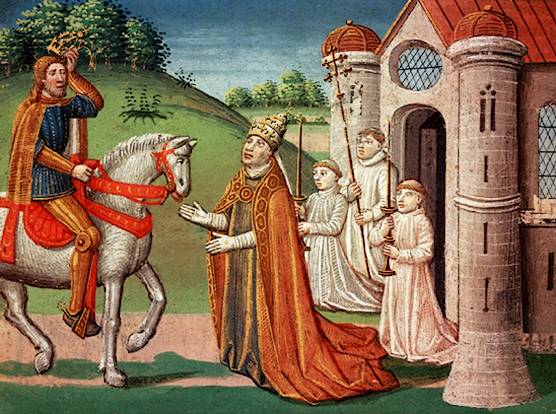
Horseback Riding as a Mode of Transportation
The Role of Horses in Medieval Travel
Horseback riding was a primary mode of transportation in medieval times, particularly for long-distance travel. Horses were the ideal choice for traversing vast distances, rugged terrains, and often poorly maintained roads. They provided a reliable means of transportation, allowing people to travel faster and farther than they could on foot.
The availability of horses for travel greatly influenced trade and communication between different regions. Merchants relied heavily on horses to transport goods from one marketplace to another. Horses also facilitated the movement of messengers, pilgrims, and nobles, enabling them to reach their destinations more efficiently.
Challenges and Advantages of Horseback Travel
While horseback travel offered numerous advantages, it also presented its fair share of challenges. Long journeys on horseback required endurance and physical fitness, as riders had to endure extended periods in the saddle. The lack of comfortable saddles and advanced padding meant that riders often experienced discomfort and fatigue.
Furthermore, traveling on horseback demanded a considerable amount of maintenance and care. Horses needed proper feeding, watering, and rest to ensure they remained healthy and fit for travel. Carrying supplies such as food, water, and equipment was essential, as it was not always possible to find suitable provisions along the way.
Despite the challenges, horseback travel was still preferred due to its speed, adaptability, and ability to maneuver through different terrains. Horses enabled individuals to explore new lands, forge valuable connections, and experience the freedom and adventure that came with traveling on horseback.
The Training and Care of Warhorses
Specialized Breeding for Mounts
Warhorses, also known as destriers, were highly valued and specially bred for use in battle. These horses were larger, stronger, and more agile than their counterparts, making them well-suited for the demands of medieval warfare. Specialized breeding programs focused on producing horses capable of carrying heavily armored knights into battle.
Breeding destriers involved careful selection of parent horses with desirable traits and characteristics. The aim was to create a lineage of horses with exceptional endurance, strength, and temperament. The process required expertise and experience in order to produce horses that met the rigorous demands of battle.
Training Techniques for Battle Horses
Warhorses underwent rigorous training to prepare them for the chaos and violence of combat. Trainers employed various techniques to desensitize horses to loud noises, such as the clash of swords or the sound of cannons. This ensured that the horses would remain steady and unafraid amidst the chaos of the battlefield.
Training sessions focused on teaching warhorses to respond to the commands of their riders effortlessly. They were taught to charge forward, turn swiftly, and halt on command. The training also included teaching the horses to kick, bite, or trample enemies when necessary, adding an extra layer of protection for the knights on their backs.

Horseback Riding in Nobility
Horses as Symbols of Power and Prestige
In medieval society, horses were not merely means of transportation or tools of war; they also represented power, prestige, and social status. Nobles and knights considered their horses as prized possessions and a reflection of their wealth and influence. The quality and appearance of one’s horse were often regarded as indicators of nobility and honor.
Nobles competed with one another to acquire the finest horses, often engaging in elaborate horse trading and breeding programs. Ornately decorated saddles, bridles, and other horse accessories were used to showcase the importance and grandeur of their owners. Owning an exceptional horse was a way for nobles to distinguish themselves from the common populace and gain respect within their social circles.
The Role of Knights in Medieval Society
Knights held a significant place in medieval society, and horseback riding was inseparable from their identity. Knights were trained in the art of horsemanship from a young age, learning to handle horses with skill and precision. Riding gave knights an advantage in battle, as they could engage enemies swiftly and launch powerful charges.
Furthermore, knights on horseback embodied the chivalric ideals of honor, bravery, and loyalty. They were expected to adhere to a code of conduct that emphasized the virtues of fairness and respect towards others. Horseback riding became a symbol of knighthood, and the mounted knight became an iconic figure associated with strength, valor, and knighthood.
Equestrian Sports and Entertainment
Jousting and Equestrian Tournaments
Equestrian sports and tournaments were highly popular forms of entertainment during medieval times. Jousting, in particular, became a celebrated spectacle that drew crowds from far and wide. Knights would engage in mock combat while riding at each other with lances, aiming to unhorse their opponents.
These tournaments showcased the horsemanship and martial skills of knights, and winning such events earned them fame and recognition. The tournaments were often accompanied by feasting, music, and other forms of merriment, turning them into grand social events. The popularity of jousting and equestrian tournaments remained widespread throughout the medieval period.
Horse Racing and Other Recreational Activities
Horse racing was another popular recreational activity enjoyed by both the nobility and commoners. Although the concept of organized horse racing as we know it today did not exist, informal races and competitions took place regularly. These races involved horses galloping at top speed, with spectators placing bets on the outcome.
Other recreational activities involving horses included hunting, falconry, and even horseback games such as quintain, where riders would attempt to strike a target while on horseback. These activities provided entertainment and served as a way for individuals to showcase their riding and equestrian skills.
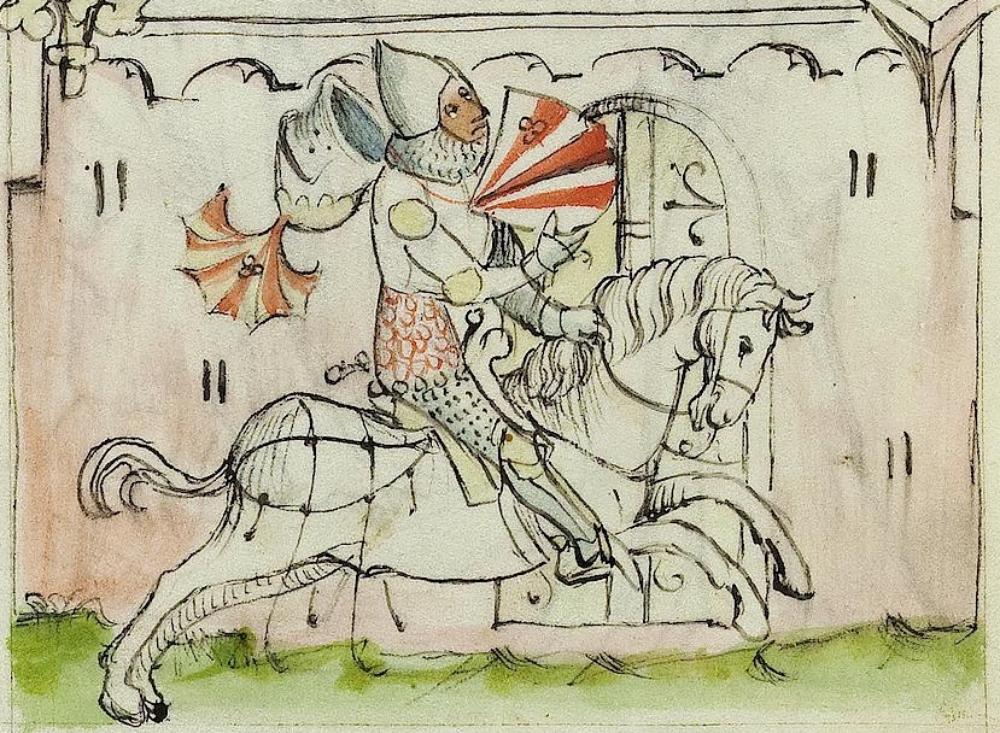
Horses in Agriculture and Labor
Role of Horses in Farming
Horses were indispensable in agricultural practices during medieval times. They provided the strength and endurance needed to plow fields, pull heavy equipment, and transport agricultural produce. Horses were especially vital in areas where other forms of power, such as watermills or oxen, were scarce or impractical to use.
Plowing with horses allowed farmers to cultivate larger areas of land more efficiently, increasing agricultural production. Horses were also used to transport harvested crops, ensuring that surplus food could reach markets and communities where it was needed.
Horses in Construction and Transportation of Goods
Horses were not only essential in farming but also played a crucial role in various construction projects and the transportation of goods. They were used to haul heavy materials such as timber, stone, and metal, which were essential for building castles, cathedrals, and other structures.
In urban areas, horses were used to transport goods from one location to another. Merchants relied on horses to carry their wares, ensuring that there was a constant flow of goods and supplies within medieval cities.
Horseback Riding in Religion and Ceremonies
Religious Rituals Involving Horses
Horses held a significant place in religious rituals and ceremonies in medieval society. They were associated with several gods and deities, and offerings of horses were made to appease or seek favor from these divine beings. This practice was especially prevalent among pagan civilizations before the widespread adoption of Christianity.
Horses were also utilized in religious processions and ceremonies, where they would be adorned with ornate decorations and symbolize divine power and authority. In this context, horses became a means of bridging the gap between the spiritual and earthly realms, connecting humans to their gods.
Burial Rites for Horses
Horses were held in such high regard that they were often given proper burials, especially when they belonged to nobles or important figures. These burials reflected the belief that horses held a spiritual significance and should be honored in death as they were in life.
Horse burials were accompanied by rituals and ceremonies that varied depending on the culture and region. The horse’s body would be carefully prepared and adorned with ceremonial trappings before being interred in a designated burial site. These burials served as a testament to the profound impact that horses had on medieval society, both in practical and spiritual terms.
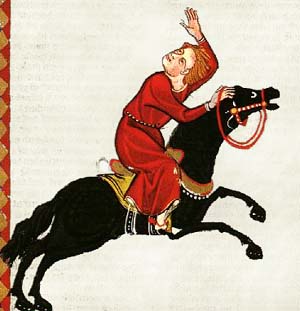
The Impact of Horseback Riding on Medieval Society
Social Classes and Horse Ownership
In medieval society, horse ownership was often associated with wealth and social status. The ability to afford and maintain horses was a privilege reserved for the upper classes, such as nobles, knights, and the clergy. Owning a horse symbolized prestige and power, setting the upper classes apart from the common masses.
Horses also played a role in reinforcing the hierarchical structure of society. Knights, who were often the elite warriors of the nobility, relied on their horses for both warfare and social recognition. The possession of a well-trained destrier distinguished them from foot soldiers and ensured their place among the elite.
Horse-related Professions and Trades
The prominence of horses in medieval society led to the emergence of various professions and trades surrounding their care and use. Blacksmiths, for example, played a vital role in crafting and maintaining horseshoes, a necessity for horses’ hoof protection. They were also responsible for creating and repairing horse armor and other equestrian equipment.
Farriers specialized in treating and caring for horses’ hooves, ensuring their health and soundness for work or travel. Trainers and stable hands were employed to manage and train warhorses and other riding horses, providing essential skills and knowledge to ensure the horses’ proper handling and behavior.
Horse Breeds and Characteristics
Popular Horse Breeds in Medieval Times
Several horse breeds were prevalent during medieval times, each with its own characteristics and uses. The destrier, as mentioned earlier, was specifically bred for battle and possessed the strength and agility required to carry knights in full armor. Other breeds, such as the courser and the charger, were also popular choices for warfare due to their speed and endurance.
In addition to warhorses, smaller and more nimble breeds, such as the palfrey or the trotting horse, were favored for everyday riding and transportation purposes. These breeds provided a comfortable and smooth ride, making them ideal for long journeys or leisurely riding.
Physical and Temperamental Traits of Horses
Horses in medieval times, regardless of breed, were generally selected for certain physical and temperamental traits. Physical characteristics, such as size, strength, and endurance, were essential for horses serving in warfare or heavy labor. These horses needed to be able to carry heavy loads or armor for extended periods without tiring easily.
Temperament was equally significant when choosing horses for different purposes. Warhorses, for example, were selected for their courage, trainability, and the ability to remain calm under stressful situations. Additionally, horses used for pleasure riding or as companions needed to have gentle dispositions and be easy to handle.
The Decline of Horseback Riding
Emergence of New Modes of Transportation
As the medieval era drew to a close and the world moved into the Renaissance period, the role of horseback riding began to diminish. The invention and widespread adoption of new modes of transportation, such as carriages and early automobiles, offered faster and more comfortable alternatives to horseback travel. These innovations gradually replaced horses in everyday transportation, especially among the growing urban populations.
Changing Warfare Tactics and Technology
Similarly, changes in warfare tactics and technology contributed to the decline of horseback riding as a pivotal aspect of warfare. The introduction of gunpowder and firearms revolutionized combat, rendering armored cavalry less effective and vulnerable on the battlefield. Infantry and artillery became increasingly dominant, leading to a decreased reliance on mounted troops.
Additionally, advancements in military transportation, such as the use of trains and tanks, provided more efficient means of moving troops and equipment compared to horse-drawn carriages. These developments ultimately led to a decline in the practicality and prevalence of horseback riding in military contexts.
Horseback Riding in Art and Literature
Depictions of Horses in Medieval Art
Horseback riding and horses themselves were frequent subjects in medieval art. Paintings, sculptures, tapestries, and illuminated manuscripts often featured knights on their horses, engaged in battles or performing acts of bravery. These artistic representations captured the cultural fascination with horseback riding and revered the ideals of chivalry and knighthood.
The quality and attention to detail in these artistic depictions reflected the importance of horses in medieval society. Artists skillfully captured the majestic and powerful nature of horses, portraying them with grace, strength, and elegance.
Horse Analogies in Medieval Literature
Horses and horseback riding were frequently used as metaphors and analogies in medieval literature. These literary devices allowed authors to convey certain emotions and concepts through the imagery and associations of horses. Horses symbolized nobility, power, freedom, and even love, depending on the context in which they were used.
In epic poems and chivalric romances, such as Geoffrey Chaucer’s “Canterbury Tales” or “Sir Gawain and the Green Knight,” horses played significant roles as both practical means of travel and symbols of virtues and ideals.
Horseback Riding in Folklore and Legends
Famous Horses in Medieval Folklore
Medieval folklore and legends were replete with stories of extraordinary and mythical horses. Some of the most famous horses in folklore include Bucephalus, the celebrated horse of Alexander the Great, and Sleipnir, the eight-legged steed of the Norse god Odin. These horses were larger than life, possessed mythical abilities, and played instrumental roles in the tales that surrounded them.
These legendary horses captured the imagination of medieval people, inspiring awe and wonder. They symbolized the extraordinary and were often linked to the gods or heroic figures, further reinforcing the role of horses as significant and mystical creatures in the collective consciousness.
Horse-related Mythical Creatures
In addition to legendary horses, medieval folklore featured various horse-like creatures that captured the imagination of storytellers and listeners. One such creature was the unicorn, a mythical beast often depicted as a horse with a single horn on its forehead. The unicorn was considered a symbol of purity and grace, embodying the ideals of beauty and strength.
Other horse-related creatures included the kelpie, a water spirit that took the form of a horse, and the centaur, a creature with the upper body of a human and the lower body of a horse. These mythical creatures added depth and mystique to the mythology and folklore surrounding horses.
Conclusion
Horseback riding played a multifaceted and vital role in shaping medieval society. From its origins in the domestication of horses to its significance in warfare, transportation, and various cultural and religious practices, horseback riding left an indelible mark on the medieval period. The partnership between humans and horses transformed the way societies functioned, influencing everything from social structures to artistic expressions.
As modes of transportation and warfare evolved, the prominence of horseback riding gradually waned. However, the legacy of horseback riding in medieval times lives on in art, literature, and our collective fascination with this captivating era of history. The splendor and majesty associated with horseback riding continue to captivate the imagination, reminding us of the enduring bond between humans and horses throughout the ages.
